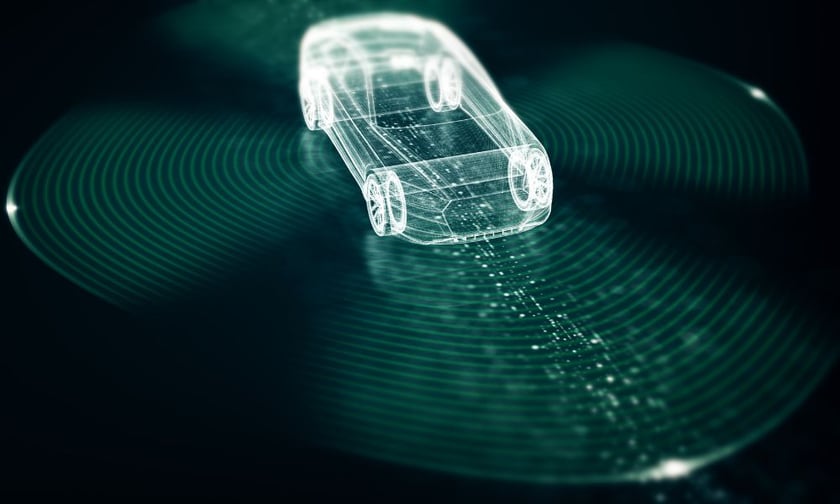

While the headlines trumpet fewer crashes and cleaner safety records, the implications for the multi- billion auto insurance sector are anything but straightforward. With companies such as Waymo, Tesla, and China’s Baidu advancing robotaxi programmes in key cities - from Austin and Phoenix to Guangzhou - the sector is poised not merely for disruption, but a fundamental rethinking of what it insures and how.
Historically, motor insurance has rested upon the simple premise of human fallibility. Risk assessment hinged on driver behavior, age, history, and geography. Autonomous technology unsettles that premise. As liability migrates from the individual to the algorithm, insurers must grapple with a paradigm shift toward product liability, software integrity, and cyber vulnerability.
Indeed, Goldman Sachs projects that per-mile insurance costs could fall by over 50% by 2040, as machine precision supplants human error. But the firm also cautions that premiums may continue to climb in the short term, driven by the soaring costs of repairing high-tech vehicles and emergent exposure to cyber threats.
The question of liability is proving intractable. When a vehicle under full automation malfunctions—whether through a sensor failure, a corrupted update, or a third-party software vulnerability—who bears responsibility? The automaker? The software provider? The data host?
This is no academic concern. Regulators in the United States continue to examine high-profile incidents involving Tesla’s so-called Full Self-Driving feature, which has been linked to fatal crashes and subjected to the largest software recall in the company’s history.
The complexity is compounded by the fragmented regulatory environment. In the absence of coherent federal standards, individual U.S. states have forged their own rules—some permitting driverless trials with minimal oversight, others imposing more rigorous safety and insurance requirements.
Despite enormous investment, the journey toward full automation remains halting. Ford and Volkswagen shuttered their autonomous joint venture, Argo AI, in 2022, writing off billions in losses. General Motors suspended its Cruise operation following an accident that prompted intense scrutiny. Even Apple, which poured billions into a moonshot project, quietly shelved its ambitions in early 2024.
The picture is not universally grim. Alphabet’s Waymo continues to expand its robotaxi footprint across the U.S., and has recently partnered with Toyota to integrate self-driving capabilities into consumer vehicles. Meanwhile, Chinese players such as WeRide and Baidu are scaling their efforts beyond Asia, with trials planned in Europe and the Middle East.
Yet the disparity between what is technologically possible and what is legally permissible remains stark. Level 5 automation - the industry’s utopia of a fully driverless car capable of navigating all conditions - appears, at best, a decade away.
For insurers, this moment is not simply disruptive - it is existential. Traditional auto insurance portfolios, built on large, predictable risk pools, may fragment as manufacturers assume a greater share of liability. That, in turn, may give rise to niche underwriting markets focused on software failure, cybersecurity, and machine-learning decision accountability.
Progressive Corp., long a bellwether of insurtech adaptation, stands to benefit from this shift. Having pioneered usage-based insurance in the 1990s, the firm is well-positioned to evolve into new underwriting models tailored to autonomous systems. Others may not fare as well.
Insurers that fail to retool their actuarial models or recruit talent with a grasp of AI and product risk will find themselves behind the curve.
Elon Musk’s plan to launch a Tesla robotaxi service in Austin - initially limited to a fleet of remotely monitored Model Y vehicles - may be emblematic of the industry’s cautious advance. Promises of autonomy abound, but the practical realities are shaped as much by regulation, litigation, and reputation as by silicon and code. Of course, the high profile billionaire has a reputation for making predictions that may not actually come to fruition.
For insurers, this is no time for complacency. As autonomous systems inch forward, the industry must reimagine its core purpose - not merely to price risk, but to understand a new taxonomy of threats that no longer sit behind the wheel.
|
Company / JV |
Locations (Public Trials/Services) |
Fleet / Scale |
Tech & Level |
|---|---|---|---|
|
Waymo |
Phoenix, SF, LA, Austin, Miami, Silicon Valley; mapping in major U.S. cities |
>700 vehicles, 250k+ rides/week |
L4; LiDAR, radar, cameras |
|
Tesla (FSD Robotaxi) |
Pilot in Austin (10 vehicles) |
10 → future large fleet |
Cameraonly; Level? |
|
Cruise (GM) |
Phoenix, Dallas, Houston |
Small test fleet |
L4; LiDAR, radar, cameras |
|
Zoox (Amazon) |
Las Vegas, Austin, Miami, Seattle, SF |
Fleet size NR |
L4; purposebuilt, LiDAR |
|
Motional (Hyundai/Aptiv) |
Las Vegas, Pittsburgh, Santa Monica (+ future LA) |
Client-based fleet |
L4; sensor fusion |
|
WeRide |
Guangzhou, Abu Dhabi, Dubai, Riyadh, Barcelona, Zurich |
8 taxi routes, buses in Guangzhou |
L4; AI, mapping |
|
Pony.ai |
Beijing, Shanghai, Guangzhou, Shenzhen, California |
Testing in 7 cities |
L4; LiDAR, radar, cameras |
|
Baidu Apollo |
Wuhan (500 taxis), Guangzhou (buses), + many cities in China |
Hundreds of vehicles |
L4; LiDAR, cameras, HD maps |
|
AutoX |
China, California |
Permits active |
L4; sensor fusion |
|
Uber + Wayve |
London (coming 2026) |
Unknown pilot fleet |
L4; AI-only navigation |
|
Inceptio (trucks) |
China national permit |
600+ trucks |
L4; LiDAR, radar |
|
TuSimple (trucks) |
U.S., China, Japan |
50+ trucks tested |
L4; LiDAR variants |
|
Daimler + Torc (trucks) |
Virginia |
Pilot tests |
L4; sensor fusion |
|
Navya (shuttles) |
Las Vegas, Europe, Asia, Japan |
Shuttle fleets multiple cities |
L4; LiDAR + cameras |
|
Aurrigo (shuttles) |
Cambridge (UK) |
3 vehicles |
L4; LiDAR + cameras |
